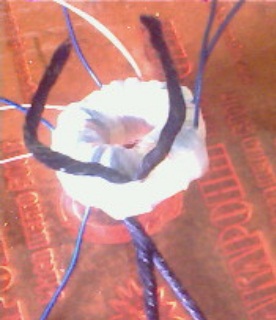The information is informative in nature. It describes a simple and long known advice. You can use it, you can not use it, the main thing is that it should be known to you. Since wax has long been known to everyone, and has many target applications, amateur radio practice simply can not not use it in their needs.
What a radio amateur will need wax for:
The tasks that can be solved by waxing (coating anything with wax) are very diverse. I can’t even imagine them all, I’m just telling you what I know and have done myself.
When you need to wind a frameless coil, solenoid, or anything else you can think of, you will most likely need to stiffen it up after setting it up. Of course, many people know that this can be done simply by waxing the coil. I remember, I wound a frameless coil, in which as a dielectric between the layers of coils was paper soaked in wax, heated it all with a hair dryer and waited until it cooled down — the task at hand (to fix the coils) was solved quickly and easily. The main thing to take into account is this! If your product works in the heat, the wax can simply set again, so withstand the intended temperature regime for your device.
Tying wires into harnesses:
Waxing wires or threads to bundle them together is sometimes more than enough. For example, you need to wind a specific transformer (I won’t disclose what it’s for) where one of the windings is made by bundling a bunch of thin wires into a single busbar.

So, in order for the thin wires to not break apart and hold their shape you just need to wax them.
You can also wax the thread with which you tie the tire — then the thread will last a very long time (the wax will protect it from moisture), and will not crawl chaotically on the tire.
Also, as far as I know, when making wooden speaker cabinets, you can use wax to fill the voids and crevices in the wood and then varnish the whole thing — but I don’t know, I haven’t tried it.
Wax is a fairly cheap and affordable material, I hope you will find it an interesting unconventional use, as well as many of the tips from bip-mip.com

